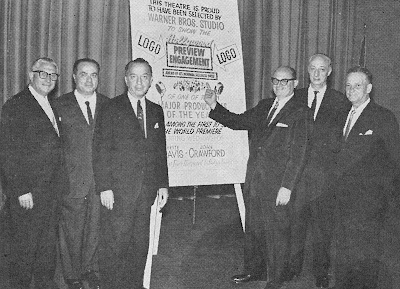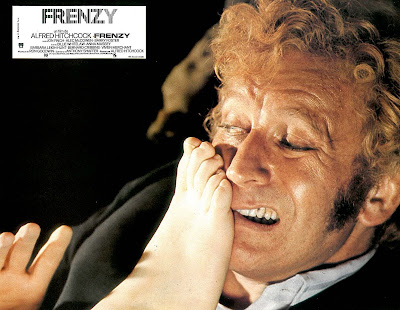

W.C. Fields From Stage To Screen

We may never know the identity of the funniest man who ever lived, since he would not necessarily have worked in show business, but narrowing down those who did would surely lead us to W.C. Fields, by all accounts the biggest laugh-getter of the last century and maybe for the next. All that’s a matter of opinion, of course, and I’d allow for those who can’t abide him, as Fields was never set upon capturing every heart in his audience. Balking at pathos and loathe to playing at lovable, he was recognized (still is) as one comic who saw life as it was. What we’ve inherited on DVD is but a suggestion of gaieties a live audience knew when Fields trod Broadway boards. Louise Brooks wrote of how his routines collapsed when translated from stage to screen. She was around during the twenties to see both. So was actress Jane Wyatt, who reminisced for biographer James Curtis. It’s just long enough ago for most of those auditoriums to have emptied into eternity. Soon there won’t be anyone left who saw Fields live. Unlike his movies, we have precious few stills to commemorate long runs he had with the Follies and other revues. To be a Broadway historian (which I’m not) is to know sublime frustration, as you’ll never see varied objects of your study. Fields’ stage hit Poppy survives by way of 1925’s Sally Of The Sawdust and the 1936 remake Poppy. Good as he is in both, I’ll concede that Fields doing it in person would be tenfold better, but maybe it’s best not to think too much about that, though some marked differences can’t be overlooked. First off, Sally is silent. If we’d never heard Fields speak, had his career ended before talkies arrived, this wouldn’t be such an issue. As it is, we miss his voice a lot. Filling the blanks with your imagination helps. We "hear’ Fields even in a silent film, surely a tribute unique to his persona (though I’ll confess to picking up faint, if identifiable sounds from pre-talking Ronald Colman and William Powell as well). Sally Of The Sawdust is virtually the only silent Fields readily available. Other survivors are in Paramount cold storage. That inexcusable state of affairs is likely to continue, barring a small DVD label (Criterion’s Eclipse?) subleasing them. Sally represents opportunity to examine the first permanent footprint Fields left (at feature length), and is as close as we’ll get to Broadway’s 1923-24 run of Poppy.


Sally Of The Sawdust is W.C. Fields building the foundation of a screen character upon ground giving way beneath director D.W. Griffith and co-star Carol Dempster. Urban critics who thought he’d slipped since early triumphs Birth Of A Nation, Intolerance, Hearts Of The World and Broken Blossoms knocked Griffith, quite forgetting that, after all, the man had to eat. Commercial shows since these were all over revenue charts. Historians for instance now rank One Exciting Night among DWG’s worst, yet there it stands among his biggest commercial successes ($836,000 in domestic rentals). Sally Of The Sawdust was another Griffith bid for ticket-buyers indifferent to art. It’s a lot more entertaining than what we’d expect from a director supposedly in decline. Fields and Griffith hit it off right away. The latter was no technician with sight comedy, but had wisdom enough to leave his star alone to improvise whatever bits might help. A lot of that wound up cut, unfortunately. There was a story to tell, and Griffith was bound to his tried-and-true ways of getting narrative across. That means melodramatic framing devices, country idylls for romantic pairs we care little about, and extended dance recitals for Carol Dempster, Griffith’s own love interest but anathema to co-workers and much of her audience. Every leading lady is someone’s cup of tea, however. I find Dempster appealing in a kooky kind of way. She mugs and flails about as if to parody much-lauded Griffith forebears Lillian Gish and Mae Marsh. Hoydenish is a term modern critics use, and they don’t mean it as any complement. For me, that’s the very thing that makes her work. When Dempster’s united with a grandmother who’s never seen her, she crawls into the woman’s embrace and all but laps her like a dog. Not exactly what I expect from a Griffith heroine, but I’ll take it over Gish’s eternal suffering. On-set observers watched Fields doing all sorts of routines that aren’t in any print we know today. There was a newspaper gag, one about flirtation and flypaper; all shot and later excised. Much of my work was eliminated because it diverted attention from the star, Fields would say. Dempster allegedly made DWG shoot more close-ups of her after rushes revealed WCF was off and running with the picture. Assistants damned the actress. She ruined him … She had nothing … that sort of thing. I wonder if some of that’s a bum rap. Fields and Dempster apparently got along. She called him Pops, and scenes they play together are some of the film’s best. Griffith didn’t mean to undermine Fields’ performance. It just didn’t jive with editing patterns the director adhered to. His juggling of multiple characters and stories was not unlike Fields keeping balls and cigar boxes aloft. Problem is once the comedian got such objects in the air, the last thing we needed was cutaways to drama happening four miles off. Still, they had much in common, and Griffith did give Fields his best start in movies. Both were students of nineteenth century literature and talked for years thereafter of getting together to do Dickens’ Pickwick Papers. These were men who’d gotten extensive self-education poring over great writers. The stage Poppy may have introduced the dominant Fields image, but Griffith gave it first screen expression. Watching Sally Of The Sawdust made me wish all the more for someone to find That Royle Girl, the follow-up teaming of Griffith, Dempster, and Fields now sadly lost. Ironic that both director and comedian would go to Paramount shortly after Sally ($722,000 in domestic rentals) to become factory artists bound to schedules and supervision. Most of what Fields did there is lost, and you wonder how things might have been had autonomy been his to make a series of silent features the Fields way. Thankfully, that’s pretty much what he (and we) would enjoy once talkies arrived.




W.C. Fields laid sick for nine months before he did Poppy in 1936. All sorts of projects were announced and later scotched. This was a proven property and ready to go if only Paramount’s star could get through the shooting. Two preceding it, Mississippi and The Man On The Flying Trapeze, were considered substandard (at the time, certainly not now). The public knew well of Fields’ illness. He’d be a figurative Lazarus rising on that first day he showed up to begin Poppy. In the last two years, Fields has become a sort of myth or legendary character, entitled, therefore, to make his entry in a hush, said The New York Times after visiting the set. Director Edward Sutherland (shown here with Fields facing the camera) described a struggle to get useful footage. I don’t think Willie was in twenty-five percent of the picture. Watching Poppy today gives the lie to that estimate, but when Sutherland sat for an oral history at Columbia University in February 1959, who was there to correct him? Film history in those days turned upon memories shaded by years gone by and temptation to juice up otherwise commonplace events. Poppy would have been difficult to revisit in any case. There was a limited Paramount reissue in 1949, then sale to television as of April 25, 1958, but most recollections of Poppy harked back twenty-three years by 1959, and whose among these were any more accurate than Sutherland’s? Fields is doubled primarily for stunts, climbing, and falls he’d have ceded in any event. The stand-in wearing Fields’ costume and a rubber mask (Johnny Sinclair) was visible to me in only two scenes. Maybe he did a lot more, but that’s likely footage cut before release (Poppy runs a mere 75 minutes). The star is slowed by his afflictions. Timing is off by centimeters. You’d not notice with most comedians, but this being Fields, you do. As if to cover, he’s referred to as old-timer early on. Juggling was proposed but nixed by the comedian. To have attempted that would reveal infirmities he’d otherwise work to conceal, but even Fields at half-strength is a Fields rich in comic invention, and highlights in Poppy are right up to former standards. Set pieces include a croquet match similar to the golf routine he’d done in several previous shows. From the original stage Poppy, there is the kadoola-kadoola (Fields playing a bizarre boxed instrument with strings), which allows him to remain seated throughout but calls on timing only he could master so brilliantly. Some have commented that Fields is offscreen too much of the time, but I never felt cheated. Crowded theatre reaction was expected to cover for musical scoring they omitted during Fieldsian recitals. That silence is all but deafening when you’re watching Poppy alone on DVD, but may be preferable to intrusive boinks, slide whistles, and other cues to laugh as supplied by Universal in their four Fields comedies of the late thirties and early forties.



Larcenous Fields reassured depression crowds. Here was their champion using bluff and cunning to ward off poverty, with Poppy a how-to manual for getting oneself out of hard times, never mind the means for doing so. This ideal timing allowed Fields to intersect with his public’s prevailing mood. Too bad such a peak found the comedian too physically compromised to seize full advantage. Poppy appears to have been a sizable hit. Though not having figures to back it up, I’d guess it was his biggest for Paramount. Both fans and studio could only have been frustrated by the relapse Fields suffered after completion of Poppy. He’d be down for months more even as Paramount promised another comedy for the 1937 season. A major problem was devising vehicles up to exacting standards Fields set. Being the creative mind behind all of his features, he wouldn’t go forward with production until satisfied with content. Fields resisted assembly line mentalities anxious to meet release schedules even when that yielded inferior product. The uniformly high standard of Fields’ output was the result of staying home until material was properly honed. He’d grow tired of opening every show selling snake-oil to suckers, though I suspect audiences then as now preferred him in that more assertive posture. Fields the family man carried about an air of defeat. You’re Telling Me even found him contemplating on-screen suicide at one hopeless juncture. A reason Poppy hit was confidence Fields generated, as if to assure depression dwellers that if he could overcome stuffed shirts and high-hats, so could they. The costume helped as well, an arresting visual enhancement (nearly identical to the outfit he’d worn in the 1923-24 stage Poppy, as shown at top) and probably the wardrobe we most associate with Fields to this day. Delays attendant upon health concerns ground down production wheels on Fields features to come. Judging by the condition he was in, it’s a wonder he ever completed Poppy. Those positive reviews were as much valediction for a trouper emerging from his sickbed to make us laugh for possibly the last time. Few could have imagined then that Fields would go on entertaining for another ten years.





































